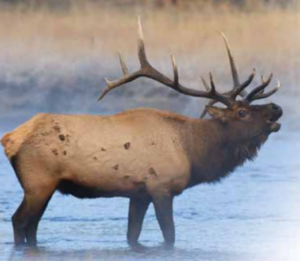
First Nations Development Institute has announced plans to continue its ongoing work to catalyze Tribal initiatives in the Northern Great Plains to steward Tribal grassland regions and other natural resources in keeping with cultural traditions, while contributing to tribal economic and community development.
Native News Online
October 3, 2019
First Nations Development Institute (FNDI) has announced plans to continue its ongoing work to catalyze Tribal initiatives in the Northern Great Plains to steward Tribal grassland regions and other natural resources in keeping with cultural traditions, while contributing to tribal economic and community development.
“Native Nations in the Northern Great Plains have become anchor points in the grasslands regions. They hold some of the most pristine grasslands in the country and are working to revitalize wildlife and bison that are instrumental in grassland preservation and soil restoration,” said Jackie Francke, vice president of programs and administration for First Nations. “We look forward to our continued efforts in helping Tribes implement land management practices in a manner that includes traditional ecological knowledge.”
The United Nations’ Global Assessment report on Biodiversity and Ecosystem Services (released May 6, 2019) substantiates that “on average [human impacts on the environment] have been less severe or avoided in areas held or managed by indigenous peoples and local communities.”
FNDI believes there is readiness in Native communities to support efforts to continue or develop Native-led and developed preservation methods for natural grasslands in the region. In addition, the large amount of grasslands in the Northern Great Plains provides opportunities for private philanthropy to achieve a substantial return on investment by supporting tribes whose reservations provide anchors for grasslands protection and preservation. By focusing on these strategies and revitalizing traditional ecological knowledge (TEK) from the local tribes, the opportunity to sustain these grasslands abounds.
The first Northern Great Plains tribal ecological stewardship project by FNDI was launched in late 2014. In 2015, the project collaborated with several tribes in South Dakota and Montana — including the Standing Rock Sioux, Cheyenne River Sioux, Lower Brule Sioux, Crow Creek Sioux, Oglala Lakota Nation, Rosebud Sioux, Fort Peck Assiniboine and Sioux, and Fort Belknap Assiniboine and Gros Ventre tribes — to explore and inform tribal ecological stewardship practices in the Great Plains of South Dakota and Montana as well as provide a forum to consider the relationship between responsible ecological stewardship practices and economic development strategies for tribally-controlled areas of the Northern Great Plains region.
In late 2016, FNDI announced it was extending the project into 2018. The focus moved to facilitating the dialogue around and active implementation of strategies that catalyze tribally-controlled ecological stewardship initiatives that are compatible with community tribal values and contribute to tribal economic and community development opportunities. The long-term vision is for tribes to capitalize on and regain control of their natural resource assets in a sustainable manner and to thrive in their communities, keeping their cultures and worldviews intact and reducing their reliance on federal programs and soft money by strengthening economic development opportunities that are guided by Native communities.
Most recently, First Nations worked with the Cheyenne River Sioux Tribe’s Natural Resources Department in South Dakota, the Crow Tribe Natural Resources Department in Montana, and the Chippewa Cree Tribe Natural Resources Department’s Chippewa Cree Tribe Carbon Credits Project in Montana. First Nations provided capacity-building and networking activities that helped build the tribal capacity and ecological sustainability in the region, as well as addressed dynamic situations and issues for long-term planning and stewardship of tribally-controlled natural resources.
The ongoing work is made possible by a grant from Margaret A. Cargill Philanthropies.

